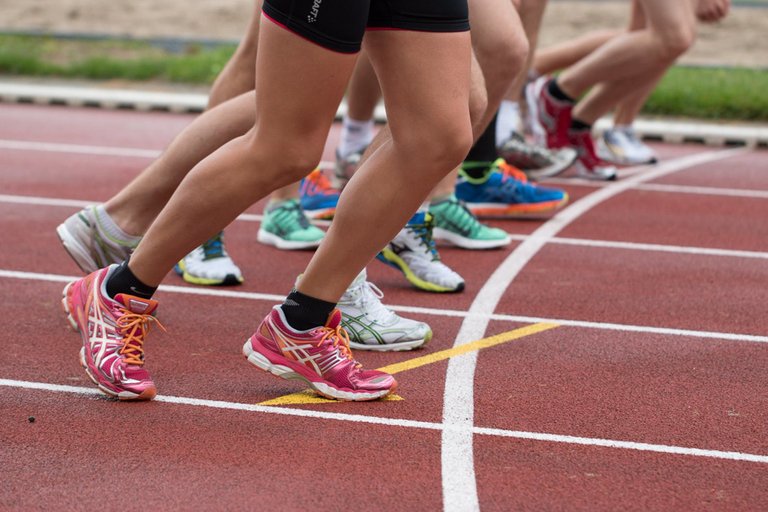Types of running training
Although at first glance it may seem that runners have only one type of training - jogging, but, first, "pure" running is not limited to everything, and the jogging itself may be different. Therefore, in addition to cyclical exercise, proper nutrition, and recovery, runners in their training also use different types of running training.

Like almost every amateur runner, over time he began to think about how to improve his results while running, as the usual increase in running volume is not enough. So I decided in this article to understand a bit about what types of running training exist: regenerative running, long-running, light running, pace running, interval running, and how they can help the runner improve his results.

Renewable running
running relatively short distances, done at a light pace.
What is it for?
Restorative running helps to increase the efficiency of your body. It is usually performed after competitions or hard training, ie against the background of fatigue. The main benefit of such a run is the improvement of your physical shape due to the fact that the body gets used to working in a state of fatigue. Therefore, running with very low intensity will be a good tool for the body to adapt to stress.
Advantages
Allows you to recover if you run for a short time and in the lowest heart rate zones
Long run
increased training duration to improve endurance, which teaches the body to work with fatigue.
What is it for?
If you are preparing to run a half marathon or marathon, you will definitely have a long workout. As a result of training, the number of mitochondria will increase, aerobic capacity will increase. It is extremely important that the body learns to work more economically. And of course, from the point of view of psychology, this is also an important training: it gives confidence in strength before a long race.
Advantages
Forms physical and spiritual preparation for future competitions.
Easy running
running at a light conversational pace.
What is it for?
About 70-80% of the volume of the whole run takes place in the so-called conversational pace, the zone of aerobic running. This means that the oxygen supplied to the body is fully sufficient to ensure muscle function without the occurrence of "oxygen debt".
Advantages
Increasing overall endurance, preparation of the musculoskeletal system for more intense training loads.
Pace running
running at the level of the lactate threshold or threshold running.
What is it for?
During such workouts, the pace should feel "comfortably heavy" and be 83-87 percent of your VO2max. Depending on the individual capabilities and physical shape of the athlete, this will be the fastest pace that a runner can maintain for 20-60 minutes.
During a brisk run, lactate and hydrogen ions, by-products of metabolism, acidify muscles, which eventually leads to fatigue. The harder you train, the higher you raise your threshold by lowering lactate production and speeding up its neutralization. As a result, you can run longer and faster.
Advantages
Increase endurance and increase the period of time during which you can maintain a relatively fast pace.
Interval running
alternation of high-intensity running with periods of rest in the form of light running.
Interval sessions are usually divided into two categories - short or long segments - and are most often held in a stadium. They are a great way to gradually increase the performance of the runner and his resistance to fatigue during high-intensity loads.
Long intervals - intervals from 600 to 1200 meters, which are performed at a pace for competitions of 5 kilometers and alternate with jogging. They are a great way to gradually increase the performance of the runner and his resistance to fatigue during high-intensity loads.
Short intervals are segments from 100 to 400 meters, which are performed at a pace for competitions of 1500 meters. Long-distance runners typically use shorter and faster intervals at the beginning of a training cycle to increase their net speed and then move on to longer ones to develop speed endurance.
Advantages
Improving running shape, endurance, concentration of mind and body
Hi Andrii, I like your article! Would you mind posting it in Sport City? I would just add series and uphills... Series: repetitions of shorter segments at a higher rhythm as the competition rhythm and with complete "rest", e.g. 10x200m at 90% when preparing a 1500m or 3000m; 5-6x 1000m (3'50"/km) for a 5K (rhythm 4'/km); 8-10x 1000m for a 10K; 3x 5000m or 4x4000m for Half Marathon,...
Uphills, very important for strength if you don't like to go to the fitness (like me), are done in a hybrid form between intervals and series; we walk downwards of jog slowly (Intervals I'd do 4'/km fast 5-5'15/km slow in 2'-1' tact)
If you want to chat about these things and more, please visit the Sport City Discord Server!
Maybe you can give me some tips there or here, how you've been able to reach 500 people in the first 4 hours after posting this post?....
As for the coverage, I don't really understand how it turned out for me
Love it,.what a great post!
I use a milar types of training when swiming, sadly I am so not a runer as I get bored so fast while runing hahahah but thats me ;)
When swiming I get into a trance state because of the breathing regulation. I think you have that also when runing and controling youre breath. It is like a meditation that ends in a runners high hahaha seimers high in my case lol.
Thanks for the cool text, realy well writen, and love how youre earnings evolve!
So deserved, keep it up, youre a maschiene hahah
!BEER 🍻
!invest_vote
Well, I'm just a runner so far, and I can't get to bikes or swimming. But I hope to get to the bike next year.
View or trade
BEER.Hey @androshchuk, here is a little bit of
BEERfrom @sandymeyer for you. Enjoy it!Learn how to earn FREE BEER each day by staking your
BEER.@sandymeyer denkt du hast ein Vote durch @investinthefutur verdient!
@sandymeyer thinks you have earned a vote of @investinthefutur !
Thank you!
One little tipp to improve: when you use youre images, write it in the post for extra respect from hivers hahaha
Greez 🍀
!BEER 🍻
View or trade
BEER.Hey @androshchuk, here is a little bit of
BEERfrom @sandymeyer for you. Enjoy it!Learn how to earn FREE BEER each day by staking your
BEER.